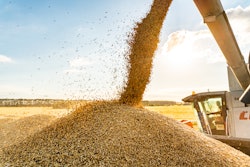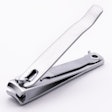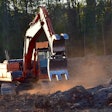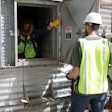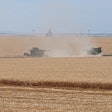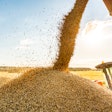
June 2023 was the hottest June ever recorded on Earth, according toNOAAdata. AndEl Niño is backand staying into 2024, which means temperatures are going to stay warm.
For workers in grain, feed and allied processing industries, being able to identify the signs and symptoms of heat-related injuries is critical.
In 2022, the U.S. Department of Labor’sOccupational Safety and Health Administrationlaunched aNational Emphasis Programto protect millions of workers from heat illness and injuries.
Through theprogram, OSHA will conduct heat-related workplace inspections before workers suffer completely preventable injuries, illnesses or worse, fatalities.
As part of the program, OSHA will proactively initiate inspections in over 70 high-risk industries in indoor and outdoor work settings when the National Weather Service has issued a heat warning or advisory for a local area. The list of 70 industries includes certain farming and agricultural industries.
OSHA将进行编程(预先计划好的)检查ions in targeted high-risk industries on any day that the National Weather Service has announced a heat warning or advisory for the local area.
To stay a step ahead, be sure to train your workers in identifying heat-related illnesses in themselves and their fellow workers and establish a heat illness prevention program.
Employers should evaluate conditions at their worksites and take steps to prevent heat-related illness among their workers. In particular, employers should keep in mind that employees who are required to engage in intense or continuous physical exertion, or who are exposed to high temperatures and humidity or direct sunlight, may be susceptible to heat-related illness.
Heat stress in the workplace
Every year, dozens of workers die and thousands more become ill while working in extreme heat or humid conditions.
There are a range of heat illnesses and they can affect anyone, regardless of age or physical condition.
Heat stress occurs when the body cannot get rid of excess heat. When this happens, the body's core temperature rises and the heart rate increases.
As the body continues to store heat, the person begins to lose concentration and has difficulty focusing on a task, may become irritable or sick, and often loses the desire to drink. The next stage is most often fainting and even death if the person is not cooled down.
Factors that contribute to heat stress are high air temperatures, radiant heat sources, high humidity, direct physical contact with hot objects, and strenuous physical activities.
Signs of heat illness
Under OSHA law, employers are responsible for providing workplaces free of known safety hazards, which includes protecting workers from extreme heat.
An employer with workers exposed to high temperatures should establish a complete heat illness prevention program.
- Provide workers with water, rest and shade
- Allow new or returning workers to gradually increase workloads and take more frequent breaks as they acclimatize, or build a tolerance for working in the heat
- Plan for emergencies and train workers on prevention
- Monitor workers for signs of illness
Symptoms of heat illness include confusion, fainting, seizures, excessing sweating and dizziness.
If you notice an employee showing signs of heat-related illness, have them sit or lie down in a cool, shady area. Provide water to drink and cool the worker with cold compressed ice packs. If signs or symptoms worsen or do not improve, seek medical help by calling 911.
To help prevent heat-related illnesses, schedule appropriate work/rest cycles throughout the day. When possible, strenuous work should be scheduled to avoid the peak heat of the day. Rotate job functions among workers and have employees work in a buddy system to watch out for each other.
Heat-related illness resources
Here are a few additional resources on heat-related illnesses and how to prevent them in your feed and grain facilities:








